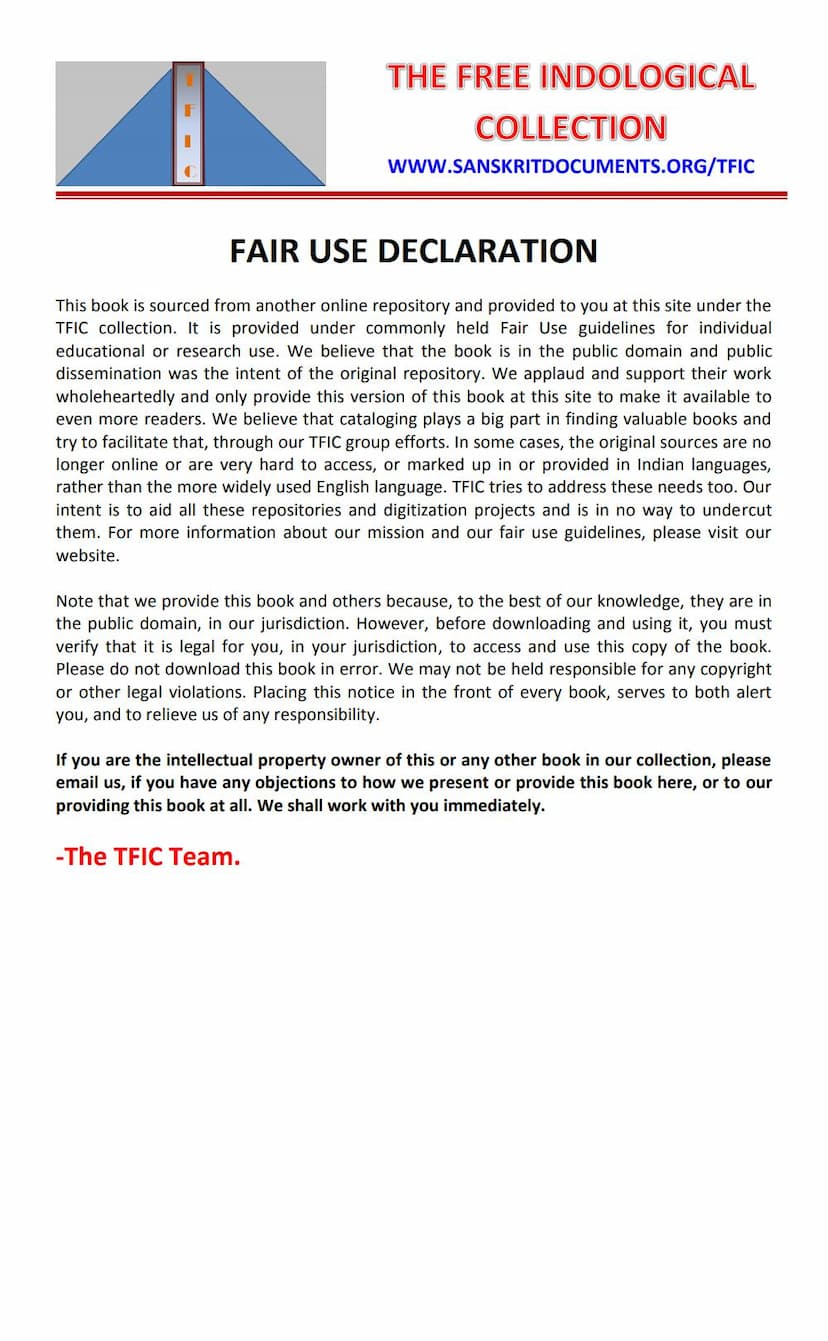Ang 01 Ang 01 Acharang Sutra
Added to library: September 1, 2025

Summary
Here is a comprehensive summary of the Acharanga Sutra, based on the provided text:
Book Title: Ang 01 Ang 01 Acharanga Sutra Author(s): Professor Ravjibhai Devraj Publisher: Ravjibhai Devraj Publication Year: 1906 (Second Edition)
Overall Purpose and Content:
The Acharanga Sutra is one of the fundamental scriptures of Jainism, belonging to the Angas (limbs) of the Jain canon. This particular edition, translated by Professor Ravjibhai Devraj with the assistance of Jain scholars, aims to present the text in Gujarati with a focus on making its profound teachings accessible to a wider audience. The Sutra is primarily concerned with the conduct and discipline of Jain ascetics (monks and nuns) and lays down the foundational principles of Jain ethics, philosophy, and spiritual practice.
Key Themes and Sections:
The text is divided into multiple chapters (Adhyayanas) and further into sections (Uddeshas), each delving into specific aspects of ascetic life and Jain principles. The core teachings revolve around Achar (conduct/behavior) and Sutra (rules/teachings).
1. Ethical Conduct and Discipline (Achar):
- Renunciation and Asceticism: The Sutra emphasizes the importance of renunciation of worldly possessions, desires, and attachments as the path to liberation.
- Ahimsa (Non-violence): A central theme is the profound commitment to Ahimsa in its broadest sense. The text meticulously details the avoidance of violence towards all living beings, including those in the earth-body (prithvi-kaya), water-body (ap-kaya), fire-body (agni-kaya), air-body (vayu-kaya), and plant-body (vanaspati-kaya), as well as mobile beings (trias-kaya). It provides detailed guidelines on how ascetics should conduct themselves to minimize harm to all forms of life.
- Self-Control and Austerity (Tapa): The text outlines rigorous practices of self-control, fasting, penance, and other forms of austerity that ascetics must undertake to purify the soul and overcome karmic bonds.
- Conduct in Daily Life: The Acharanga Sutra provides practical rules for ascetics on how to live their daily lives. This includes guidelines on:
- Movement and Conduct: How to walk, sit, and move mindfully to avoid harming living beings (e.g., chalan-chalayan).
- Alms-Gathering (Achar): The proper way to seek food and sustenance, ensuring it is pure and obtained without causing harm or attachment.
- Dwelling Places (Vas): The rules for choosing and residing in places, avoiding those that are impure or potentially harmful.
- Speech and Thought: The importance of controlling speech and thought to avoid violence, falsehood, or negativity.
- Personal Belongings: The strict limitations on personal possessions and the proper conduct regarding them.
- Karmic Bondage and Liberation: The Sutra explains how actions (karma) create bonds that lead to the cycle of birth and death. It details how adherence to the prescribed conduct and austerities helps in shedding karma and achieving liberation (Moksha).
- Mindfulness and Vigilance: Ascetics are constantly reminded to be mindful of their actions, thoughts, and speech, to be vigilant against any lapse in conduct, and to remain detached from worldly pleasures and pains.
2. Philosophical and Spiritual Insights:
- The Nature of the Soul (Atma): The text implicitly discusses the nature of the soul as distinct from the body and the material world, and the goal of freeing it from karmic impurities.
- The Path to Liberation (Moksha): The Acharanga Sutra is essentially a guide to the spiritual path that leads to the ultimate goal of Moksha – liberation from the cycle of birth and death.
- The Role of the Guru: The importance of a spiritual guide (Acharya) is highlighted, as they provide the wisdom and instructions necessary for proper conduct.
- The Importance of Knowledge and Understanding: The Sutra stresses that mere outward practice without the right understanding of principles is insufficient. It encourages intellectual understanding and adherence to the true meaning of the teachings.
- The Three Jewels (Triratna): While not explicitly named as such in every section, the underlying principles of Right Faith (Samyak Darshan), Right Knowledge (Samyak Gyana), and Right Conduct (Samyak Charitra) are consistently emphasized as the path to liberation.
3. Structure and Presentation:
The provided text showcases the Gujarati translation and explains the significance of the Acharanga Sutra. It highlights the efforts of the translator and scholars in making this ancient scripture accessible. The preface and introductory notes emphasize the importance of the Sutras as the foundation of Jainism and the profound teachings contained within each letter and word. The inclusion of the "Vignapan" (Advice to the Reader) underscores the text's spiritual value.
The detailed index (Anukramanika) at the end provides a clear structure of the Sutra, listing the various Adhyayanas and Uddeshas, which cover a wide range of topics from the nature of the soul and karma to the specifics of ascetic discipline regarding movement, speech, alms, sleep, clothing, and various types of violence to be avoided.
In essence, the Acharanga Sutra, as presented in this Gujarati translation, serves as an encyclopedic guide for Jain ascetics, covering the minutiae of their disciplined life and the philosophical underpinnings that guide their path towards spiritual purity and liberation.